History GK Compilation from JKPSC Exam 2013:
1. The Indus Valley Civilization was first discovered in:
(A) 1910 A.D.
(B) 1916 A.D.
(C) 1921 A.D.
(D) 1940 A.D.
Ans: 1921 A.D. (C)
2. Majmaul-Bahrayn was written by:
(A) Shaikh Ahmad Sirhindi
(B) Miyan Mir
(C) Mulla Shah Badakhshi
(D) Dara Shukoh
Ans: Dara Shukoh (D)
3. The Krishna cult was greatly revived by:
(A) Namdev
(B) Chaitanya
(C) Raidas
(D) Tukaram
Ans: Chaitanya (C)
4. Which is the correct sequence?
(A) Balaji Vishwanath–Baji Rao I–Balaji Baji Rao (Nana Saheb)–Madhav Rao
(B) Baji Rao I–Balaji Baji Rao (Nana Saheb)–Madhav Rao–Balaji Vishwanath
(C) Balaji Baji Rao (Nana Saheb)–Balaji Vishwanath–Madhav Rao–Baji Rao I
(D) Balaji Vishwanath–Madhav Rao–Baji Rao I–Balaji Baji Rao (Nana Saheb)
Ans: Balaji Vishwanath–Baji Rao I–Balaji Baji Rao (Nana Saheb)–Madhav Rao (A)
5. The “Scientific Society” was first established at:
(A) Gorakhpur
(B) Ghazipur
(C) Benaras
(D) Calcutta
Ans: Ghazipur (A)
6. Dandi March took place in:
(A) 1927 A.D
(B) 1928 A.D
(C) 1929 A.D.
(D) 1930 A.D
Ans: 1930 A.D (D)
7. The resolution for Poorna Swaraj (Full Independence) was passed at the Congress session of:
(A) Lahore 1929
(B) Karachi 1931
(C) Delhi 1932
(D) Calcutta 1933
Ans: Lahore 1929 (A)
8. Tuhfat ul Muwahhideen (Gift to monotheists) was written by:
(A) Sir Syed Ahmad Khan
(B) Moulvi Chiragh Ali
(C) Nawab Mohsin ul Mulk
(D) Raja Ram Mohan Roy
Ans: Raja Ram Mohan Roy (D)
9. Shuja-ud-Dawlah was the Nawab of:
(A) Awadh
(B) Rohilkhand
(C) Carnatic
(D) Murshidabad
Ans: Awadh (A)
10. The Ryotwari Settlement was introduced in the:
(A) North West Provinces and Central India
(B) Bengal, Bihar and Orissa
(C) Gangetic Valley
(D) Madras and Bombay Presidencies
Ans: Madras and Bombay Presidencies (D)
11. Idangai and Valangi were the South Indian:
(A) Social divisions
(B) Saivite sects
(C) Royal ceremonies
(D) Vaishnavite sects
Ans: Social divisions (A)
12. Who founded the city of Agra?
(A) Firoz Tughlaq
(B) Syed Khizr Khan
(C) Sikander Lodi
(D) Akbar
Ans: Sikander Lodi (C)
13. Who founded the city of Delhi?
(A) Anangpal
(B) Vajrata
(C) Rudrana
(D) Devaraja
Ans: Anangpal (A)
14. Who conferred the Diwani of Bengal, Bihar, and Orrisa on the English East India Co.?
(A) Muhammad Shah
(B) Akbar II
(C) Shah Alam II
(D) Bahadur Shah II
Ans: Shah Alam II (A)
15. During the Mauryas, markets were known as:
(A) Kharavatika
(B) Vahikpatha
(C) Pradesa
(D) Panayapattana
Ans: Panayapattana (D)
16. Which Gupta Emperor is represented on his coins as playing the Lute or Veena?
(A) Chandragupta I
(B) Chandragupta II
(C) Samudragupta
(D) Skandagupta
Ans: Samudragupta (C)
17. The children born to a Brahmin father and a Sudra mother are categorized as :
(A) Vratyas
(B) Nisadas
(C) Abhiras
(D) Pulindas
Ans: Nisadas (B)
18. Who came to India with Mahmud of Ghazni?
(A) Ibn Asir
(B) Alberuni
(C) Ibn Hauqal
(D) Ibn Jubair
Ans: Alberuni (B)
19. Just before his accession to the throne, Iltutmish was the Governor of:
(A) Delhi
(B) Badaon
(C) Tarain
(D) Panipat
Ans: Badaon (B)
20. Razia Sultan’s successor was:
(A) Muizzuddin Bahram Shah
(B) Alauddin Masud Shah
(C) Ruknuddin Firoz Shah
(D) Nasiruddin Mahmud
Ans: Muizzuddin Bahram Shah (A)
21. The fourteen major Rock Edicts of Asoka at Shahbazgarhi and Mansehra are in __ script
(A) Kharoshti
(B) Aramaic
(C) Greek
(D) Brahmi
Ans: Kharoshti (A)
22. Muhammad bin Tughlaq died while in pursuit of the rebel:
(A) Qazi Jalal
(B) Alauddin Masud Shah
(C) Jalal ibn Lala
(D) Taghi
Ans: Taghi (D)
23. Milk, Inam, and Waqif grants were resumed by:
(A) Iltutmish
(B) Balban
(C) Alauddin Khalji
(D) Qutbuddin Mubarak Khalji
Ans: Qutbuddin Mubarak Khalji (D)
24. The tanka introduced by Iltutmish was made of:
(A) gold
(B) silver
(C) copper
(D) brass
Ans: silver (B)
25. During the battle of Raksasa-Tangadi-1565, the titular ruler of Vijayanagar was:
(A) Rama Raya
(B) Sadasiva Raya
(C) Tirumala
(D) Venkatadri
Ans: Sadasiva Raya (B)
26. The Harappan culture existed between:
(A) 3500 BC–2500 BC
(B) 2500 BC–1750 BC
(C) 1750 BC–1600 BC
(D) 1600 BC–1000 BC
Ans: 2500 BC–1750 BC (B)
27. The Indus sites do not have any evidence of:
(A) Barley
(B) Sugarcane
(C) Rice
(D) Peas
Ans: Sugarcane (B)
28. Rig Veda is the earliest specimen of:
(A) Indo-Iranian language
(B) Indo-Tibetan language
(C) Indo-Malay language
(D) Indo-European language
Ans: Indo-European language (D)
29. The most important divinity during the Rig Vedic period was:
(A) Indra
(B) Nirrti
(C) Agni
(D) Varuna
Ans: Indra (A)
30. Which was the emblem of the Imperial Cholas?
(A) Tiger
(B) Lion
(C) Fish
(D) Horse
Ans: Tiger (A)
31. In the later Vedic period, the chief means of livelihood was:
(A) agriculture
(B) trade and commerce
(C) handicrafts
(D) warfare and plundering
Ans: agriculture (A)
32. Mahavira’s mother was a __ princess.
(A) Kaivalya
(B) Pala
(C) Sena
(D) Lichchavi
Ans: Lichchavi (D)
33. Jainism believes in:
(A) Supreme God
(B) Karma theory
(C) Sacrificial ritual
(D) Caste superiority
Ans: Karma theory (B)
34. According to Rig Veda, Panis was indulged in:
(A) Trade and commerce
(B) Handicrafts
(C) Hunting and gathering
(D) Cultivation
Ans: Trade and commerce (A)
35. Which has the earliest ploughed field?
(A) Banwali
(B) Kalibangan
(C) Ropar
(D) Rangpur
Ans: Kalibangan (B)
36. In the Rig Vedic period, kula meant:
(A) war
(B) family
(C) sacrifice
(D) village assembly
Ans: family (B)
37. The Calcutta Madrasa was founded by:
(A) Warren Hastings
(B) Nawab Saleemullah Khan of Dacca
(C) Jonathan Duncan
(D) Lord Hardinge
Ans: Warren Hastings (A)
38. Kabir’s tomb is in:
(A) Gorakhpur
(B) Varanasi
(C) Magahar
(D) Basti
Ans: Magahar (C)
39. “Young India” was edited by:
(A) Bipin Chandra Pal
(B) Gandhiji
(C) Ashwini Kumar Dutt
(D) Madan Mohan Malviya
Ans: Gandhiji (B)
40. Buddha died at:
(A) Kusinagar
(B) Bodh Gaya
(C) Saranath
(D) Sanchi
Ans: Kusinagar (A)
41. Buddhist teachings were spread in:
(A) Pali
(B) Prakrit
(C) Ardhamagadhi
(D) Sanskrit
Ans: Pali (A)
42. Muhammad bin Tughlaq organized the department of Diwan-i Amir-i-Koh to:
(A) promote agriculture
(B) undertake Qarachil expedition
(C) make a road in the Siwalik hills
(D) beautify hills
Ans: promote agriculture (A)
43. During her last days, Razia Sultan had married:
(A) Jamaluddin Yaqut
(B) Malik Altunia
(C) Aitigin
(D) Malik Salari
Ans: Malik Altunia (B)
44. During the 3rd battle of Panipat, the Peshwa was:
(A) Balaji Vishwanath
(B) Baji Rao I
(C) Balaji Baji Rao (Nana Saheb)
(D) Madhav Rao
Ans: Balaji Baji Rao (Nana Saheb) (C)
45. The Permanent Settlement was introduced by:
(A) Warren Hastings
(B) Lord Cornwallis
(C) Lord Wellesley
(D) Lord Hastings
Ans: Lord Cornwallis (C)
46. Under Sivaji, Majmuadar (Amatya) was:
(A) Accountant general
(B) Chief of the army
(C) Foreign Secretary
(D) Officer to decide theological questions
Ans: Accountant general (A)
47. Under Sivaji, Majmuadar (Amatya) was:
(A) Accountant general
(B) Chief of the army
(C) Foreign Secretary
(D) Officer to decide theological questions
Ans: Accountant general (A)
48. The kingdom of Ahmadnagar came to an end in:
(A) 1630 A.D.
(B) 1636 A.D.
(C) 1640 A.D.
(D) 1648 A.D.
Ans: 1636 A.D. (B)
49. The last Qutub Shahi ruler of Golcunda was:
(A) Ibrahim
(B) Muhammad
(C) Abdullah
(D) Abul Hasan
Ans: Abul Hasan (D)
50. Under Shivaji the regular army was known as :
(A) Paga
(B) Silahdars
(C) Havaldars
(D) Surnis
Ans: Paga (A)
51. In the Vijayanagara Empire, Varahas were:
(A) couplets of poetry
(B) guilds
(C) gold coins
(D) assembly
Ans: gold coins (C)
52. The Brihadiswara Temple at Tanjore was built by:
(A) Vijayalaya
(B) Parantaka
(C) Rajaraja I
(D) Rajendra I
Ans: Rajaraja I (C)
53. Who was Kamban?
(A) He wrote Ramayana in Tamil
(B) Author of Chola history
(C) A great architect during Cholas
(D) Teacher of Rajendra I
Ans: He wrote Ramayana in Tamil (A)
54. Hemu was the Prime Minister of:
(A) Sher Shah
(B) Bahadur Shah
(C) Islam Shah
(D) Adil Shah (Adali)
Ans: Adil Shah (Adali) (D)
55. The battle of Chausa was fought between Humayun and:
(A) Sher Khan (Shah)
(B) Bahadur Shah Gujarati
(C) Muzaffar Shah Gujarati
(D) Hemu
Ans: Sher Khan (Shah) (A)
56. The most widely exported crop from Vijayanagara was:
(A) Tea
(B) Coffee
(C) Black Pepper
(D) Tobacco
Ans: Black Pepper (C)
57. Jayadeva’s Gita Govinda deals with the cult of:
(A) Rama
(B) Krishna
(C) Shiva
(D) Shakti
Ans: Krishna (B)
58. Who founded Vikamasila University?
(A) Mahipala
(B) Devapala
(C) Gopala
(D) Dharmapala
Ans: Dharmapala (D)
59. Romaka Sidhanta is a book on:
(A) Chemistry
(B) Astronomy
(C) Botany
(D) Zoology
Ans: Astronomy (B)
60. Manram of the Sangam Age was a:
(A) Council of Ministers
(B) Trade guild
(C) Meeting place of village assembly
(D) Guild of artisans
Ans: Council of Ministers (A)
61. The Sun Temple at Konarak was built by:
(A) Prataparudra
(B) Anantavarman
(C) Narasimha I
(D) Narasimha II
Ans: Narasimha I (C)
62. Abdul Latif Qazwini was Akbar’s:
(A) historian
(B) poet laureate
(C) tutor
(D) court musician
Ans: tutor (C)
63. Najat ur Rashid is written by
(A) Abul Fazl
(B) Sh. Abul Faiz Faizi
(C) Abdul Qadir Badaoni
(D) Shaikh Mubarak
Ans: Abdul Qadir Badaoni (C)
64. “The Swarajists” were led by C.R. Das and:
(A) Jawahar Lal Nehru
(B) Moti Lal Nehru
(C) Vallabh Bhai Patel
(D) Dr. Ansari
Ans: Moti Lal Nehru (B)
65. Who has called Mahzar of 1579 as “Infallibility Decree”?
(A) R.P. Tripathi
(B) Vincent Smith
(C) Lane Poole
(D) Moreland
Ans: Vincent Smith (B)
66. Amuktamalyada was written by:
(A) Rama Chandra
(B) Vidyaranya
(C) Krishnadeva Raya
(D) Deva Raya II
Ans: Krishnadeva Raya (C)
67. Domingo Paes visited Vijayanagara in the reign of:
(A) Deva Raya I
(B) Deva Raya II
(C) Krishnadeva Raya
(D) Sadasiva Raya
Ans: Krishnadeva Raya (C)
68. The founder of the Chola Empire was:
(A) Vijayalaya
(B) Parantaka
(C) Rajaraja I
(D) Rajendra I
Ans: Rajaraja I (C)
69. The title of Gangai Konda Chola was assumed by:
(A) Vijayalaya
(B) Parantaka
(C) Rajaraja I
(D) Rajendra I
Ans: Rajendra I (D)
70. Under the Cholas, the largest administrative unit was:
(A) mandalam
(B) valanadu
(C) nadu
(D) kurram
Ans: mandalam (A)
71. Agrahara was:
(A) Brahmana village
(B) Assembly of villages
(C) Council of Ministers
(D) Assembly at provincial level
Ans: Brahmana village (A)
72. The first Chishti Saint in India was:
(A) Muinuddin Chishti
(B) Qutbuddin Bakhtiyar Kaki
(C) Nizamuddin Auliya
(D) Nasiruddin Chiragh-i-Dehli
Ans: Muinuddin Chishti (A)
73. Who has written that Vijayanagra Empire had three hundred ports?
(A) Barbosa
(B) Nuniz
(C) Nicoli di Conti
(D) Abdur Razzaq
Ans: Abdur Razzaq (D)
74. __ had built his capital at Siri.
(A) Iltutmish
(B) Balban
(C) Alauddin Khalji
(D) Muhammad bin Tughlaq
Ans: Alauddin Khalji (C)
75. Ibn Battuta visited India during the reign of:
(A) Alauddin Khalji
(B) Qutbuddin Mubarak Khalji
(C) Ghiyasuddin Tughlaq
(D) Muhammad bin Tughlaq
Ans: Muhammad bin Tughlaq (D)
76. The group of forty Turkish slave-officers was liquidated by:
(A) Balban
(B) Alauddin Khalji
(C) Muhammad bin Tughlaq
(D) Firoz Tughlaq
Ans: Balban (A)
77. Chengiz Khan came to the borders of India during the reign of:
(A) Iltutmish
(B) Balban
(C) Alauddin Khalji
(D) Muhammad bin Tughlaq
Ans: Iltutmish (A)
78. The name of the currency of the Mauryan period was:
(A) Pana
(B) Dirham
(C) Kakini
(D) Dinar
Ans: Pana (A)
79. Who has stated that kingship is the Divine Light (Farr-i-Izadi)?
(A) Balban
(B) Firoz Shah Tughlaq
(C) Abul Fazl
(D) Aurangzeb
Ans: Abul Fazl (C)
80. The Subsidiary Alliance was introduced by:
(A) Robert Clive
(B) Warren Hastings
(C) Lord Wellesley
(D) Lord Dalhousie
Ans: Lord Wellesley (A)
81. Awadh was annexed by the British in:
(A) 1852 A.D.
(B) 1853 A.D.
(C) 1854 A.D.
(D) 1856 A.D.
Ans: 1856 A.D. (D)
82. Nizamul Mulk I established the Asaf Jahi State of Hyderabad in:
(A) 1719 A.D.
(B) 1724 A.D.
(C) 1740 A.D.
(D) 1748 A.D.
Ans: 1724 A.D (B)
83. The Battle of Wandiwash took place between the British and:
(A) Tipu Sultan
(B) Nizam of Hyderabad
(C) The French
(D) Nawab of Murshidabad
Ans: The French (C)
84. Aurangzeb re-imposed jizyah in:
(A) 1670 A.D.
(B) 1676 A.D.
(C) 1679 A.D.
(D) 1681 A.D.
Ans: 1679 A.D (C)
85. The ‘Doctrine of Lapse’ was introduced by Lord:
(A) Hardinge
(B) Wellesley
(C) Dalhousie
(D) Canning
Ans: Dalhousie (C)
86. Kalibangan is in:
(A) Baluchistan
(B) Punjab
(C) Sindh
(D) Rajasthan
Ans: Rajasthan (D)
87. Bones of camel were discovered at:
(A) Kalibangan
(B) Lothal
(C) Harappa
(D) Mohenjodaro
Ans: Kalibangan (A)
88. The period of Rig Veda is roughly:
(A) 3000 B.C.–2500 B.C.
(B) 2500 B.C.–2000 B.C.
(C) 2000 B.C.–1600 B.C.
(D) 1600 B.C.–1000 B.C.
Ans: 1600 B.C.–1000 B.C (D)
89. Basadis were Jaina:
(A) priests
(B) religious books
(C) monasteries and temples
(D) immigrants to Karnataka
Ans: monasteries and temples (C)
90. Khan Abdul Ghaffar Khan’s name is associated with:
(A) Khilafat Movement
(B) Khudai Khidmatgars
(C) Khoksar Movement
(D) Ahrar Movement
Ans: Khudai Khidmatgars (B)
91. Which Lord partitioned Bengal?
(A) Curzon
(B) Ripon
(C) Chelmsford
(D) Irwin
Ans: Curzon (A)
92. Kesari was edited by:
(A) Bal Gangadhar Tilak
(B) Bipin Chandra Pal
(C) Ashwini Kumar Dutt
(D) Vishnu Shastri Chiplunkar
Ans: Bal Gangadhar Tilak (A)
93. Tatvabodhini Sabha was founded by:
(A) Debendranath Tagore
(B) Ishwar Chandra Vidyasagar
(C) Henry Vivian Derozio
(D) Akshay Kumar Dutt
Ans: Debendranath Tagore (A)
94. The leader of the Young Bengal Movement was:
(A) Raja Ram Mohan Roy
(B) Dwarkanath Tagore
(C) Prasanna Kumar Tagore
(D) Henry Vivian Derozio
Ans: Henry Vivian Derozio (D)
95. Lal Kunwar’s name is associated with:
(A) Bahadur Shah I
(B) Jahandar Shah
(C) Farrukh Siyar
(D) Rafiud Darjat
Ans: Jahandar Shah (B)
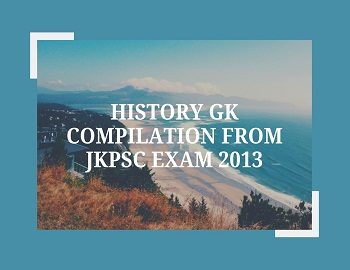
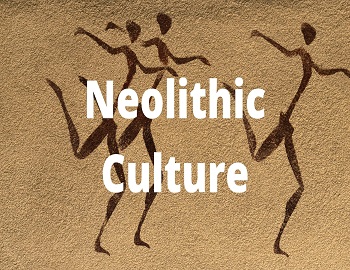
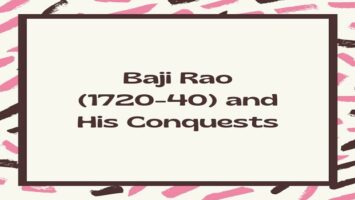
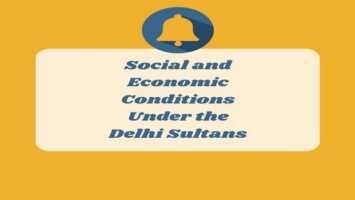
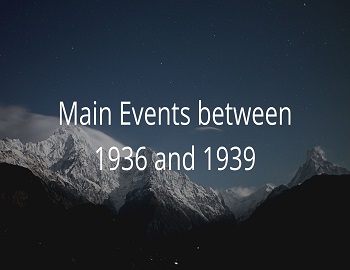
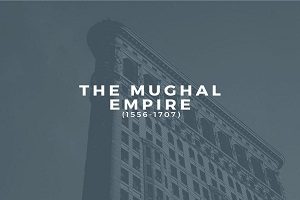
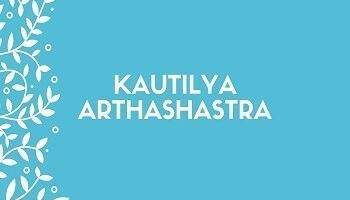
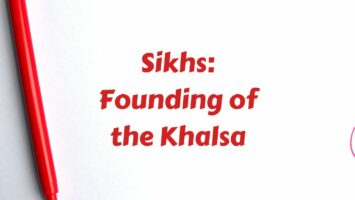
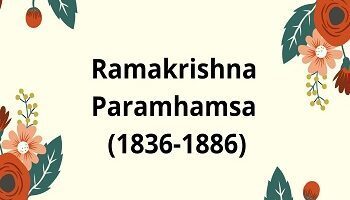
Comments (No)